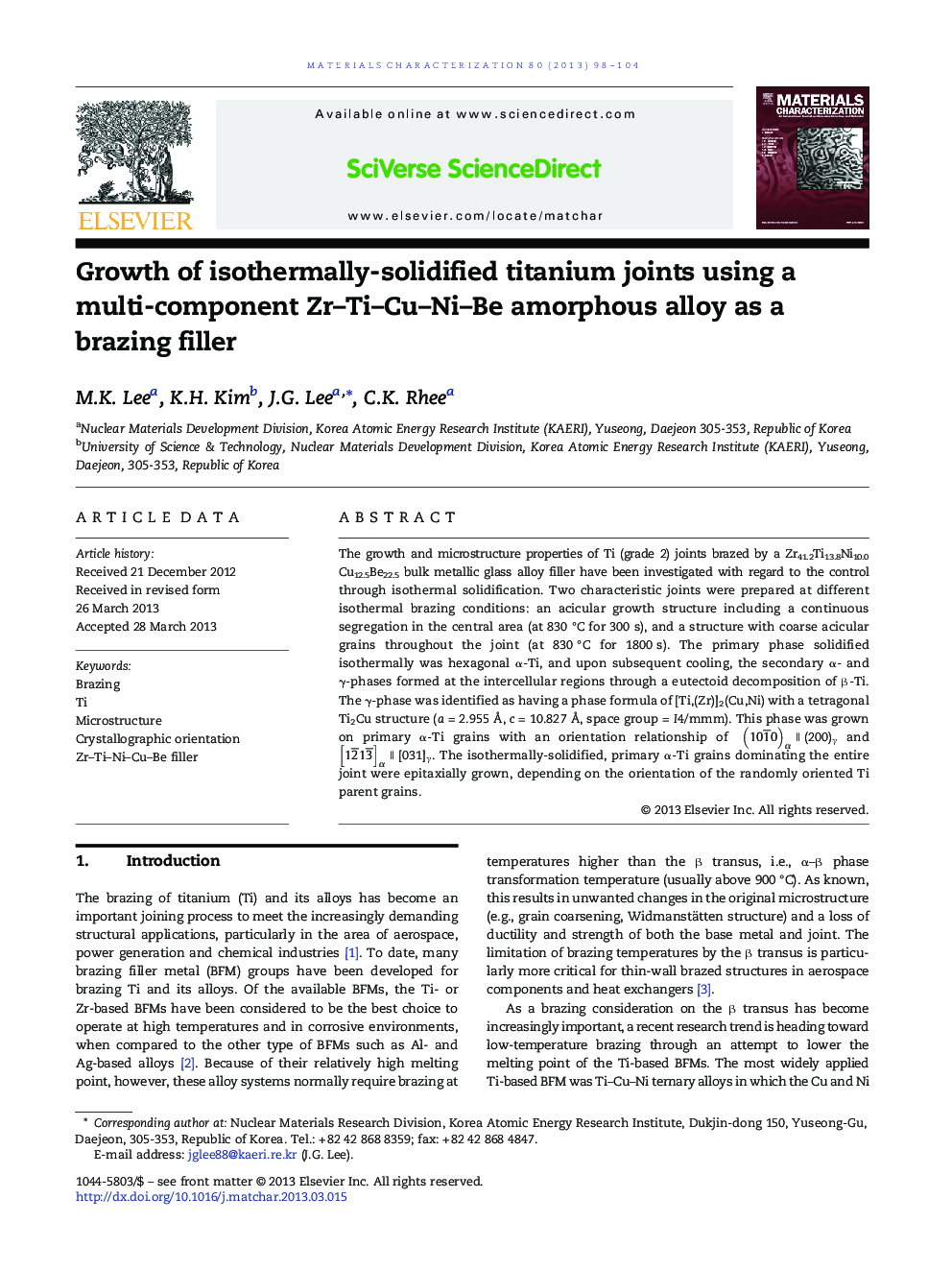| Article ID | Journal | Published Year | Pages | File Type |
|---|---|---|---|---|
| 1571209 | Materials Characterization | 2013 | 7 Pages |
•Growth properties of isothermally-solidified Ti joints were characterized.•The joints consisted of primary α-Ti and intercellular α-Ti + γ phases.•γ-phase was favored on primary α-Ti with crystallographic orientation relationship.•Primary α-Ti was epitaxially grown depending on orientation of Ti parent grains.
The growth and microstructure properties of Ti (grade 2) joints brazed by a Zr41.2Ti13.8Ni10.0Cu12.5Be22.5 bulk metallic glass alloy filler have been investigated with regard to the control through isothermal solidification. Two characteristic joints were prepared at different isothermal brazing conditions: an acicular growth structure including a continuous segregation in the central area (at 830 °C for 300 s), and a structure with coarse acicular grains throughout the joint (at 830 °C for 1800 s). The primary phase solidified isothermally was hexagonal α-Ti, and upon subsequent cooling, the secondary α- and γ-phases formed at the intercellular regions through a eutectoid decomposition of β-Ti. The γ-phase was identified as having a phase formula of [Ti,(Zr)]2(Cu,Ni) with a tetragonal Ti2Cu structure (a = 2.955 Å, c = 10.827 Å, space group = I 4/mmm). This phase was grown on primary α-Ti grains with an orientation relationship of 101¯0α ∥ (200)γ and 12¯13¯α ∥ [031]γ. The isothermally-solidified, primary α-Ti grains dominating the entire joint were epitaxially grown, depending on the orientation of the randomly oriented Ti parent grains.
